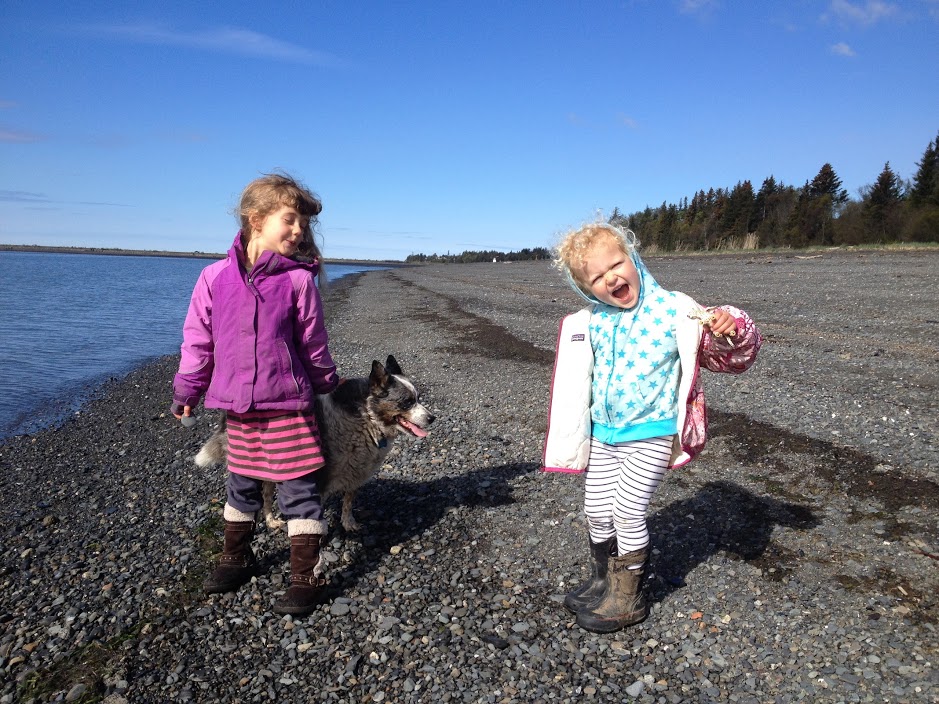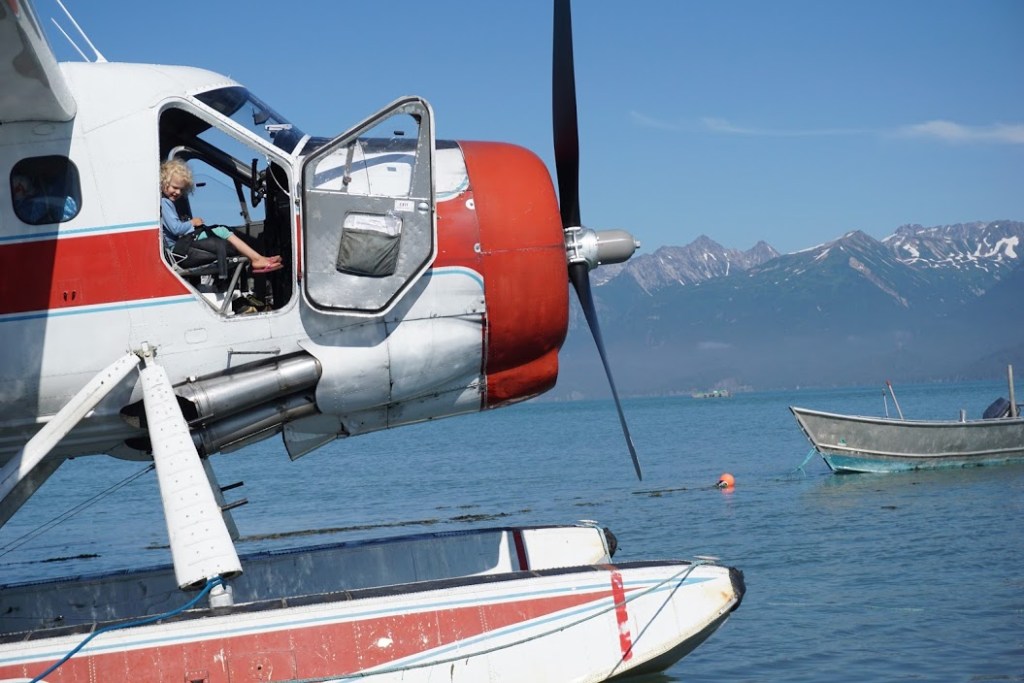One of my older daughter’s first words was “spider.” She would squeal “sib-oh” and point when we spotted the gray-black velvet bodies scuttling among the stalks of dead wildflowers as we made short loops across the wild meadow near our house the spring after she turned one.
Hummocks of old fern roots rose up to her chest, so I held her hand as we wandered into that nubby place that would become a riot of green in a matter of weeks. I’ve seen black bear in that meadow, moose cows with new calves, a coyote once, snowshoe hare, and eagles and falcons overhead. But that April, we were hunting for wolf spiders before fiddleheads and fireweed shoots sprinted towards Alaska’s tireless spring sun.
Our home state is massive: more than 300 million acres of public lands, 33,000 miles of coastline, and larger still than Texas, California, Colorado, and New Mexico mashed together. But often my two daughters and I find ourselves on safari in a neighborhood meadow or in ditches along gravel roads where the flow of water is beguiling, and dandelions are in endless supply. Or sometimes we linger for ages at a single pile of driftwood trunks at the top of the beach that becomes a can’t-touch-the-ground obstacle course.
Nothing is as it seems when I go outside with my girls. Trailside puddles become inland seas, and we pause while they cast lines for dinner. A thicket of scrawny trees is scaffolding which provides strategic views into the beyond. A pile of snow at the bottom of a sledding hill is a kingdom before it turns into an ice cream factory.

I am raising girls who are fundamentally at home outside—who strip off their shoes and layers when the day hits 50 degrees, who can think of a million ways to play on a deserted beach, who aren’t fazed by cold or rain or sheets of ice covering everything in sight. These are girls of the world, of the woods, the gravel beach, the wild meadow.
And I love to watch them navigate the challenges of this world: how to cross a creek, how to choose the best marshmallow roasting stick, when to retreat from an incoming tide so that you don’t go over-boot.
My daughters, now four and seven, were born in the largest state, but I grew up landlocked in suburbs around our nation’s capital. There were no moose, no undeveloped beaches, endless hills or gawk-worthy mountain views. But like them, as with all kids, I homed in on potential: creeks to dam, rocks to flip in search of critters, ponds that might hold frog eggs in the spring.
Children are our field guides to curiosity. They hold the maps of the imagined world. I am reminded of this every time my girls and I go outside.

And once outside, my daughters take measure of their world: a toppled birch for its climbability, low-hanging alder boughs for their bounce, beach sand for its structural integrity. The raw materials of play are always plentiful in the world out our doors. There is no shortage of excellent hiding spots, rocks to launch into water to make satisfying plonking sounds, or sticks that serve endless functions. With these, nearby adventures launch us worlds away.
Still I feel so damn lucky to be raising my girls in this vast and beautiful place. They think nothing of taking a floatplane to fish camp, where they’ll drive skiffs and four-wheelers and fill our camp jugs from a nearby waterfall. Or of riding their pink and purple two-wheelers down the dirt road past our house, which technically is into bear country. For them, a typical summer afternoon jaunt on our boat involves spotting sea otters and harbor seals, perhaps a humpback or two.
Whether it’s a short meander into the spruce woods near our house or a fly-in adventure to a far-flung Alaskan coast, the natural world is shaping the girls my daughters are, the women they will become.
I want my girls to never stop building forts and fairy houses. I want them to go camping alone, captain boats, and catch fish. And I want them to see the world as limitless and themselves as without bounds too.
Learn more about how we are putting women front and center in 2017: Force of Nature.
